Introduction
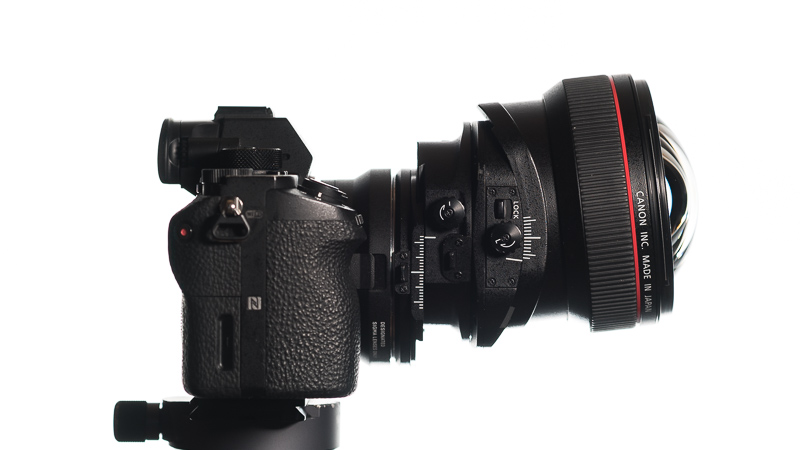
Tilt/Shift lenses are rather exotic, they are mostly used for architecture or table top photography, and with the wide availability of post processing (correcting converging vertical lines and focus stacking) you see them very rarely nowadays, even amongst professional photographers.
In this article I will tell you what Tilt/Shift lenses are all about and what they can be used for.
Shift
How it works
In the analogue era we mostly had shift (without tilt) lenses from several manufacturers like Canon, Nikon, Olympus and Leica and mostly in the 28-35mm range.
With film you couldn’t easily straighten verticals in post, so these were needed if you wanted to delve into more professional architecture shooting without having to deal with a medium or large format view camera.
Shift lenses cover a larger image circle than necessary for 35mm (fullframe) format. With the Shift function you are moving your camera in this bigger image circle and by doing so the horizontal line can be moved from the center of the image to the desired position.
This effect can nowadays be replicated by tilting the image in post. While many people think a shift lens will show less perspective distortion this is not the case. A shift lens or a tilted image in post will both show the same perspective distortion when taken from the same spot with the same focal length
Nevertheless there is a significant benefit of using a shift lens: you will still have information in the corners which otherwise is lost when tilting in post. So to get the same framing you need a wider non-shift lens compared to the shift lens.
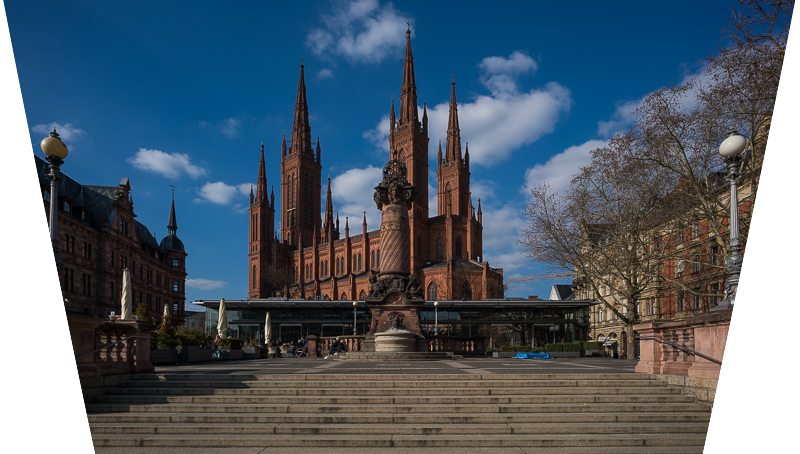
To give an example: in case of the Canon TS-E 17mm 4.0L you need about a 10.8mm non-shift lens to fully replicate it (and you will end up with significantly less pixels as you have to crop some parts of the 10.8mm image).
Example 1: Correcting converging verticals
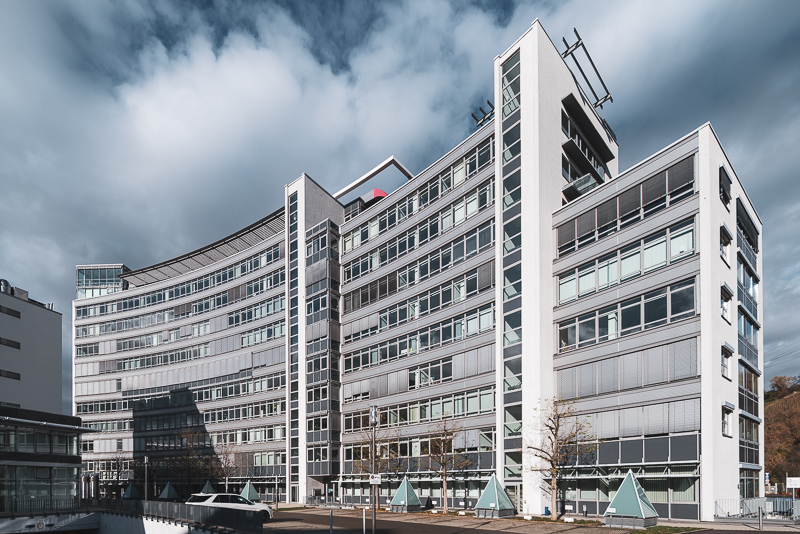
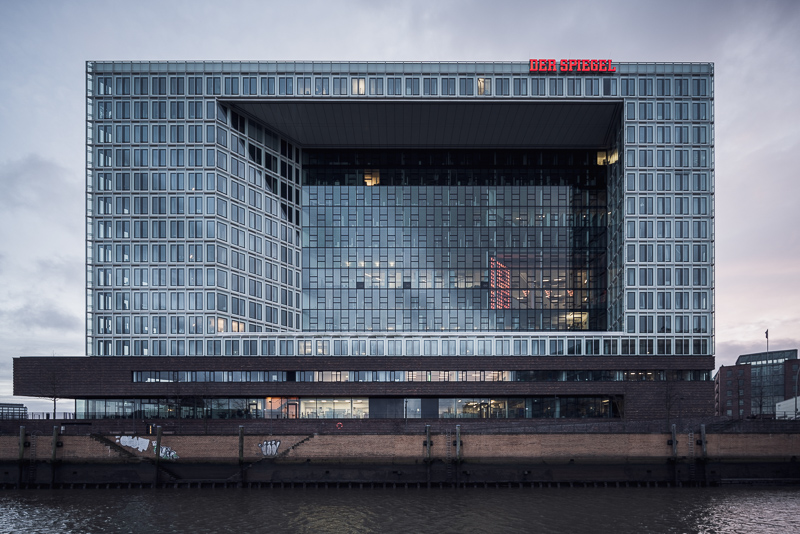
This is the application people will most likely associate with shift lenses and it probably does not need any further explanation.
Example 2: Shift Panorama
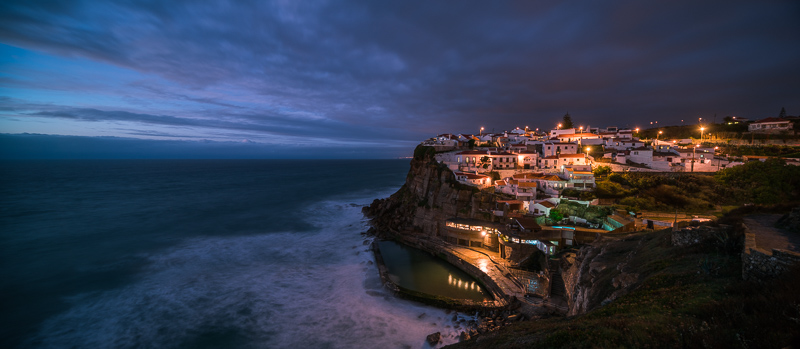
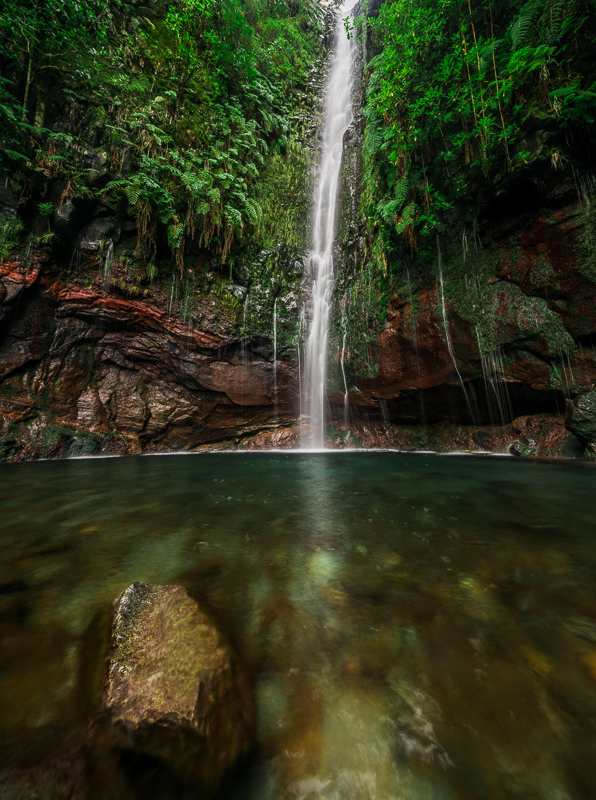
A “shift panorama” is a very simple panorama as you don’t need any accessories like a rotating plate and you won’t be running into stitching errors (for wider lenses you may need a rear shift adapter to completely eliminate stitching errors though).
When using a full frame camera you can easily realize a 48x36mm (4×3, 3 shots with 50% overlap) or 60x24mm (2.5×1, 2 shots with 33% overlap) framing which – compared to cropping an image from a wider lens – will give you an increased number of pixels and better image quality.
Example 3: Environmental Portraiture
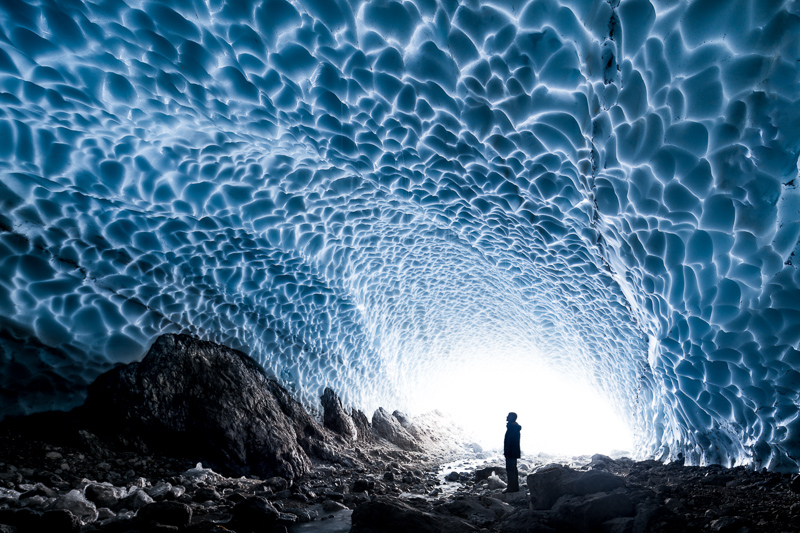
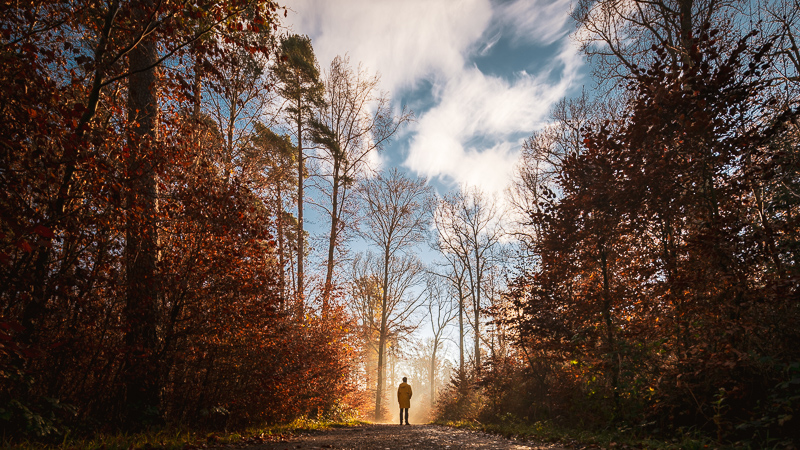
Environmental portraiture is another application I personally like to use wide shift lenses for. With these kind of shots you usually want to have the person close to the edge of the frame and you also want to avoid converging verticals. To realise this when using a non-shift wide lens like a 17mm you will have to tilt the camera up when taking the shot to have the person at the bottom and later tilt the image down in post to correct for the converging verticals so you will end up with much less pixels and a very different framing.
This is much easier with a shift lens as you will have the correct framing from the start.
Tilt
How it works
Tilt is a bit harder to master then shift if you want to make full use of it. By tilting the front part of the lens you can modify the plane of sharpness. There is a very comprehensive and helpful discussion of tilt to be found here. So I will focus on additional topics and usage scenarios not covered there in detail yet.
Example 1: Increasing depth of field
This is the classic usage scenario for tilt in landscape, architecture or table top photography. By tilting the lens a bit you can extend the plane of things in focus. By doing so you may be able to get better image quality by using an aperture like f/11 in combination with a slight amount of tilt instead of stopping the lens down to f/22 and running into diffraction or avoid focus stacking.
In the field this is a bit fiddly, so maybe you want to get some help from this resource to make better use of it.
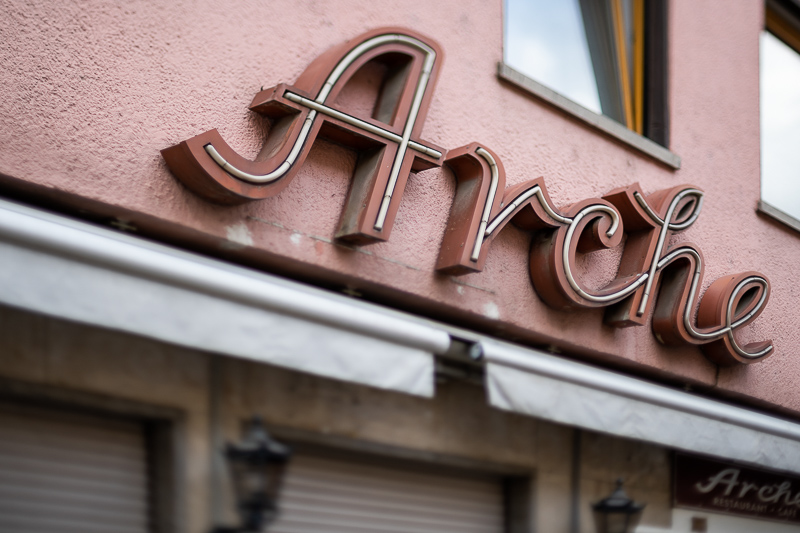
Example 2: Miniature effect
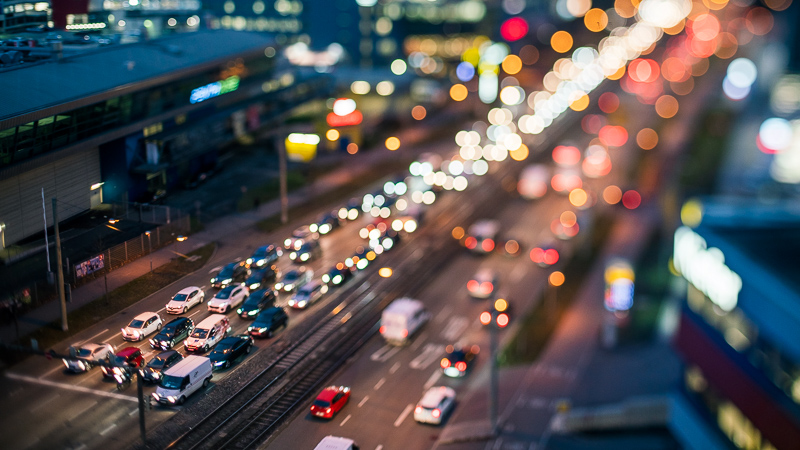
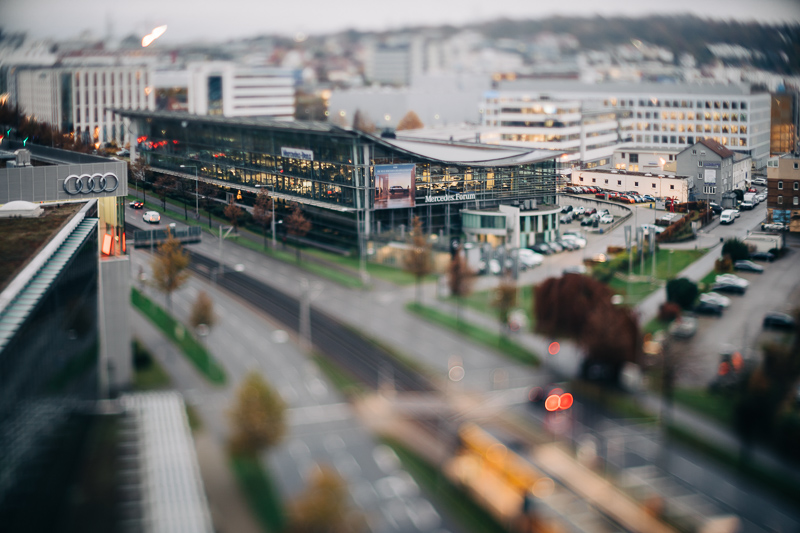
This gimmicky effect is what people usually associate with Tilt/Shift lenses. It’s the effect that many Lensbaby lenses give, and they cannot really be used for anything useful other than this.
This effect gets boring quite soon and I wouldn’t buy a Tilt/Shift lens just for that.
Example 3: Bokeh
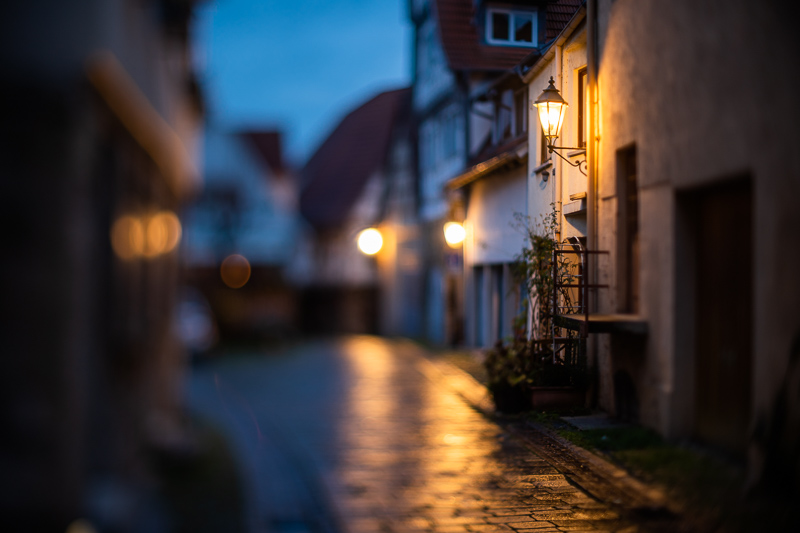
Tilting the lens can be used for increased bokeh, but it takes quite some work to not look gimmicky or just plain wrong. First we need to understand that when we tilt the lens there will be a part in focus and then one half will show the backgroud bokeh and the other one the foreground bokeh.
Most lenses have quite different rendering of foreground and background bokeh. Personally I think the background bokeh is often significantly smoother and nicer.
You can use these lenses to get a higher amount of bokeh compared to much faster lenses, especially at longer distances:
But you can see in this shot that the right hand side of the bokeh is pretty nice, while the left hand side is not so nice. You can also see a line in focus running through the buildings.
To overcome this you can combine two shots (one tilted left and one tilted right) to have the nicer bokeh on both sides, which I did here:
This also works for buildings and other large objects which you cannot otherwise take a shot of with an out of focus background even when using the Brenizer/Bokehpanorama technique.
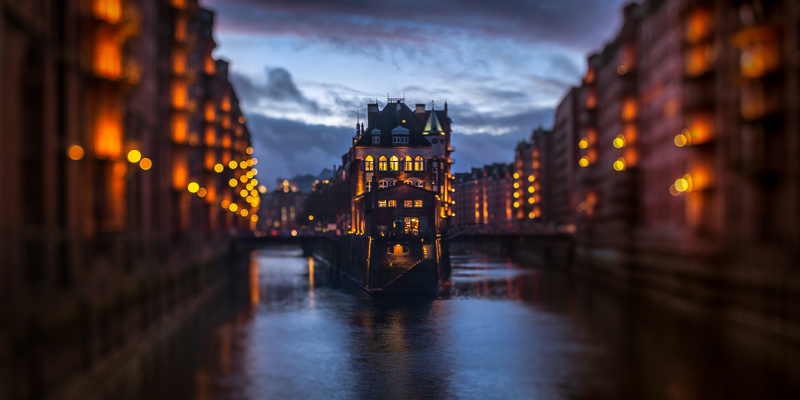
Tilt/Shift lenses
As mentioned in the introduction there are not that many Tilt/Shift lenses availabe, so I will try to mention the notable ones in this section to give you an overview what focal lengths are available.
*affiliate links
Canon
FD Mount (Tilt and Shift in same direction or orthogonal):
TS 35mm 2.8 SSC buy on ebay.com
EF Mount Series 1 (Tilt and Shift orthogonal or in same direction when modified):
TS-E 24mm 3.5L buy on ebay.com*
TS-E 45mm 2.8 buy on ebay.com*
TS-E 90mm 2.8 buy on ebay.com*
EF Mount Series 2 (Tilt and Shift in any combination):
TS-E 17mm 4.0L buy from ebay.com / amazon.com / B&H*
TS-E 24mm 3.5L II buy from ebay.com / amazon.com / B&H*
TS-E 50mm 2.8L Macro buy from ebay.com / amazon.com / B&H*
TS-E 90mm 2.8L Macro buy from ebay.com / amazon.com / B&H*
TS-E 135mm 4.0L Macro buy from ebay.com / amazon.com / B&H*
Canon offers the most complete selection of Tilt/Shift lenses and the current ones are the best you can get in terms of image quality. They also work very well when adapted to Sony cameras.
I recommend the Sigma MC-11 adapter though, as all these lenses are internal focus designs where the correct flange focal distance can have a big impact on the achievable image quality.
Nikon
Older:
PC-Nikkor 35mm 3.5 buy on ebay.com*
PC-Nikkor 35mm 2.8 buy on ebay.com*
PC-Nikkor 28mm 4.0 buy on ebay.com*
PC-Nikkor 28mm 3.5 buy on ebay.com*
PC-Micro-Nikkor 85mm 2.8D buy on ebay.com*
Newer:
PC-Nikkor 19mm 4.0E ED N buy from ebay.com / amazon.com / B&H*
PC-E Nikkor 24mm 3.5D ED N buy from ebay.com / amazon.com / B&H*
PC-E Nikkor 45mm 2.8D ED N buy from ebay.com / amazon.com / B&H*
PC-E Micro-Nikkor 85mm 2.8D N buy from ebay.com / amazon.com / B&H*
Only on the 19mm 4.0 you can set any combination of tilt and shift. The other lenses can only do tilt and shift orthogonal to each other, all but the 85 of the old ones only shift. If you want to have tilt and shift on the same axis these lenses have to be modified by a service point as some internal parts need to be replaced. For the “E” lenses you also need the expensive Commlite adapter to control the aperture when using on an E-mount camera.
So for Sony users I recommend getting one of the equivalent Canon lenses instead.
Laowa
15mm 4.5 Shift buy from manufacturer’s homepage*
17mm 4.0 (12mm 2.8 + Magic Shift Converter)
12mm 2.8 buy from manufacturer’s shop / ebay.com / amazon.com / B&H*
Magic Shift Converter buy from manufacturer’s shop / amazon.com / ebay.com / B&H*
20mm 4.0 Shift buy from manufacturer’s homepage*
The 15mm 4.5 is now the widest shift lens available, but it only allows for 11mm movement instead of the 12mm of the Canon TS-E 17mm 4.0L. Best have a look at my review of the 15mm 4.5 for further reference. The 12mm 2.8 in combination with the Magic Shift adapter “only” offers 10mm shift, but you have the benefit of being able to use it as a 12mm 2.8 for e.g. astrophotography.
Samyang
Samyang TS 24mm 3.5 ED AS UMC buy from ebay.com / amazon.com / B&H*
Samyang also introduced a 24mm 3.5 Tilt/Shift lens for various mounts. I tried it once and the image quality was pretty bad and the mechanics weren’t really convincing either. I can not recommend this one.
AstrHori
AstrHori 18mm 8.0 Shift buy from ebay.com / ebay.de / amazon.de*
On a fullframe camera this isn’t actually a shift lens as even with only 1-2 mm of shift movements the corners start becoming pitch black because of its too small image circle.
AstrHori 50mm 1.4 Tilt buy from amazon.com / amazon.de / ebay.com / ebay.de*
TTArtisan
TTArtisan 50mm 1.4 Tilt buy from official TTArtisan online shop / amazon.com / amazon.de / B&H / ebay.com / ebay.de*
Olympus
Zuiko Shift 24mm 3.5 buy on ebay.com*
Zuiko Shift 35mm 2.8 buy on ebay.com*
Being introduced in 1984 as far as I know the 24mm was the widest shift lens available until Canon caught up with their first 24mm 3.5 shift lens in 1991. David used the 35mm version a lot in the days of film, but says that the image quality is really quite poor by modern standards.
These are mostly collector’s items so their used prices do not necessarily reflect their actual value.
Leica
PC-Super-Angulon-R 28mm 2.8 buy on ebay.com*
I think this shares the same optics as the older Schneider PC Super Angulon 28mm 2.8.
Hartblei
40mm 4.0 IF TS
80mm 2.8 TS
120mm 4.0 TS Macro
As far as I know these are older rehoused Zeiss Hasselblad medium format lenses. They are very expensive and there is little information to be found online. I would rather get one of the newer Canon lenses.
Schneider
PC Super Angulon 28mm 2.8 (old) buy on ebay.com*
PC TS Super Angulon 28mm 4.5
PC TS Super Angulon 50mm 2.8 buy from B&H*
Schneider has a modern PC TS Super Angulon series which I consider being too big and expensive considering the alternatives. There is also little information to be found online so there is nothing useful I can tell you about them.
Conclusion
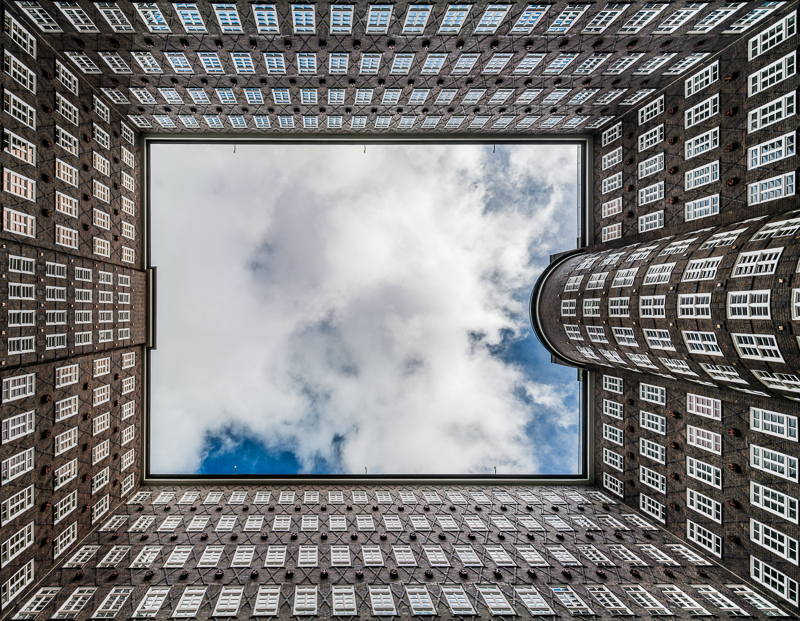
There is still a place for Tilt/Shift lenses in modern photography, but they really are special purpose lenses for certain needs. If you need one I am pretty sure you already know it.
If you just want to try one out my advice is to get one of the older Canon 24mm 3.5 or 45mm 2.8 lenses, you will be able to sell them with little to no loss if you discover they are not for you. This will be cheaper than renting one and gives you more time to learn how to use it, which will be useful.
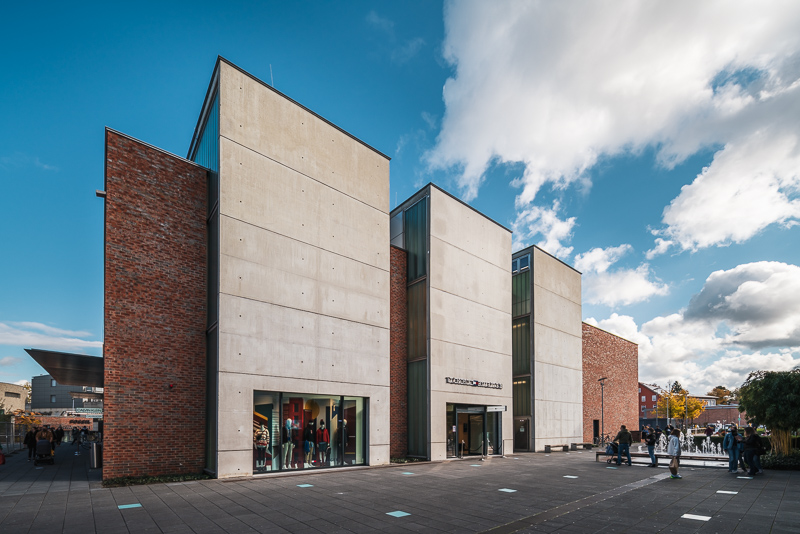
Other Articles
- Sony FE lenses for A7 series – The honest guide
- Tripods for mirrorless cameras
- Guide to ultra wide angle lenses for A7 series
- Review: PocketPano Vario XL pano adapter
Support Us
Did you find this article useful or just liked reading it? Treat us to a coffee!
![]()
![]()
![]() via Paypal
via Paypal
This site contains affiliate links. If you make a purchase using any of the links marked as affiliate links, I may receive a small commission at no additional cost to you. This helps support the creation of future content.
Latest posts by BastianK (see all)
- Analogue Adventures – Part 33: Harman Phoenix 200 - July 24, 2024
- Review: Nikon 200mm 2.0 IF-ED Ai – The first of its Kind - July 21, 2024
- Review: Voigtländer 50mm 1.1 Nokton – Better than its reputation? - July 17, 2024
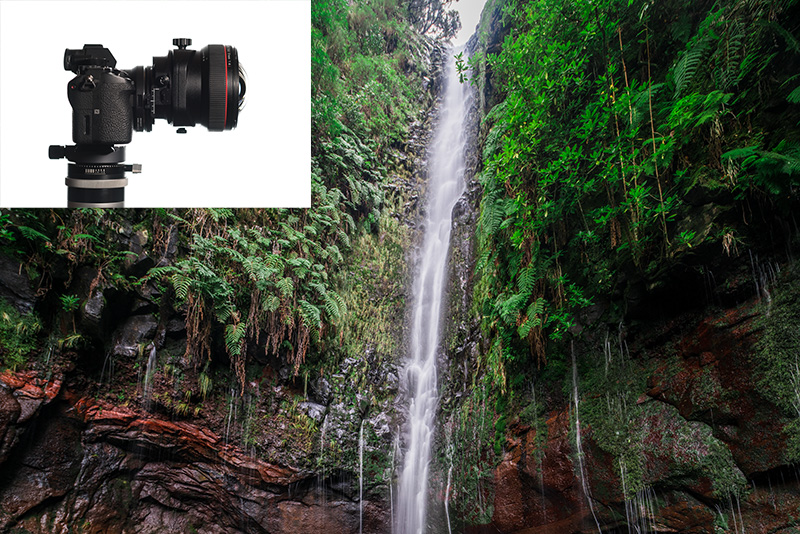

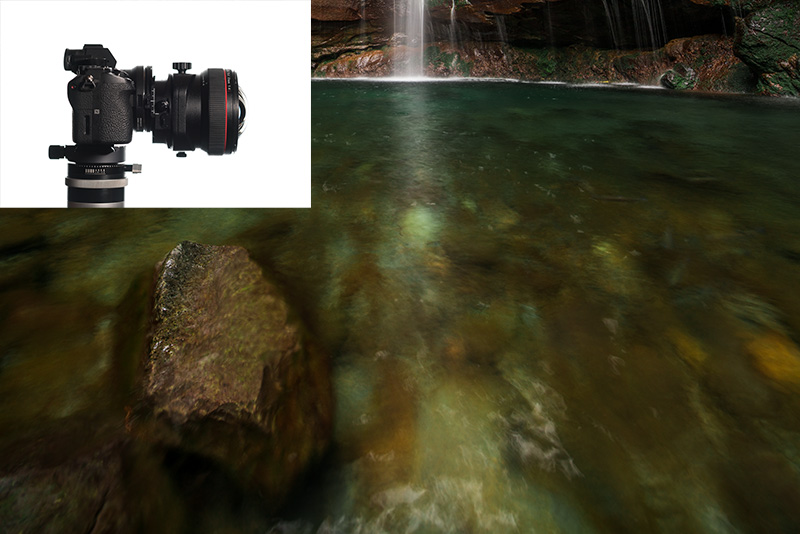
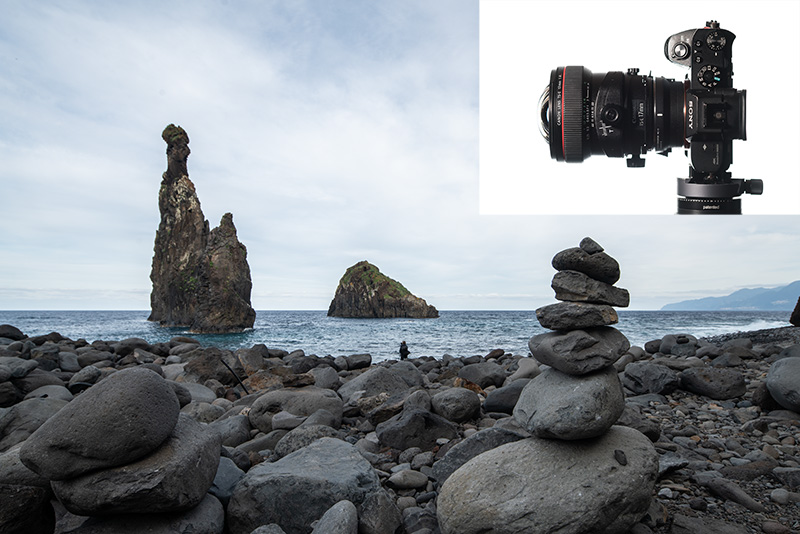
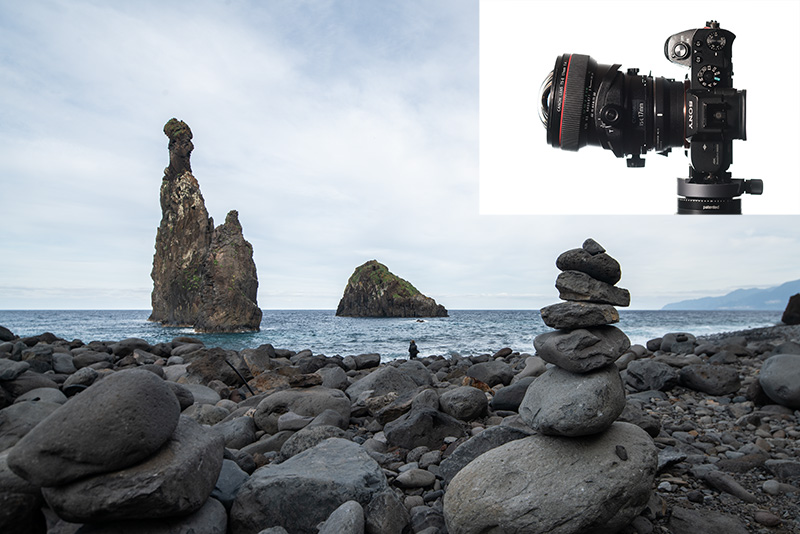
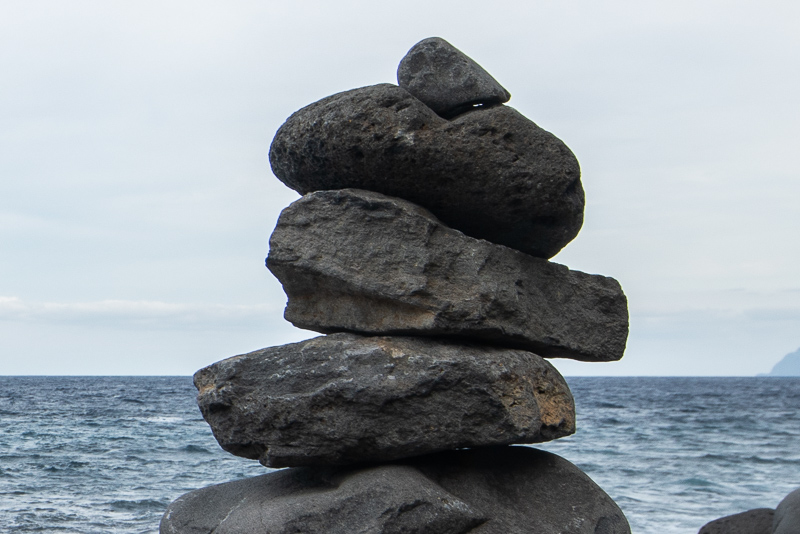
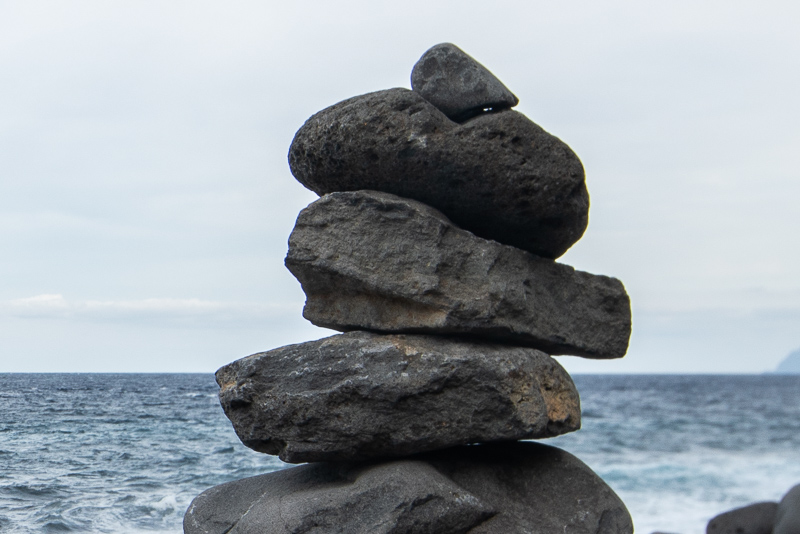
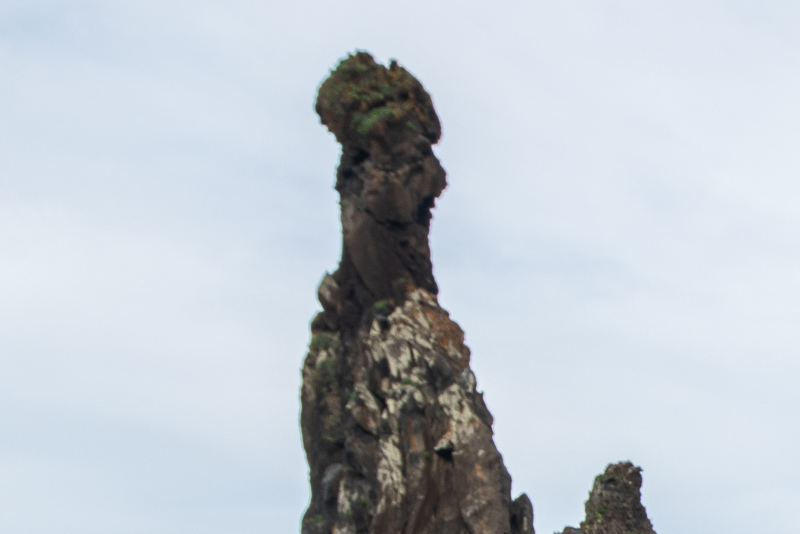
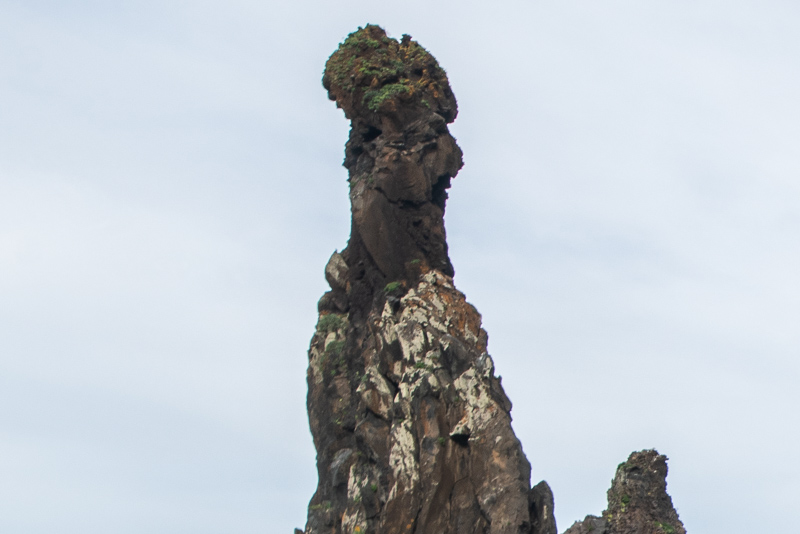
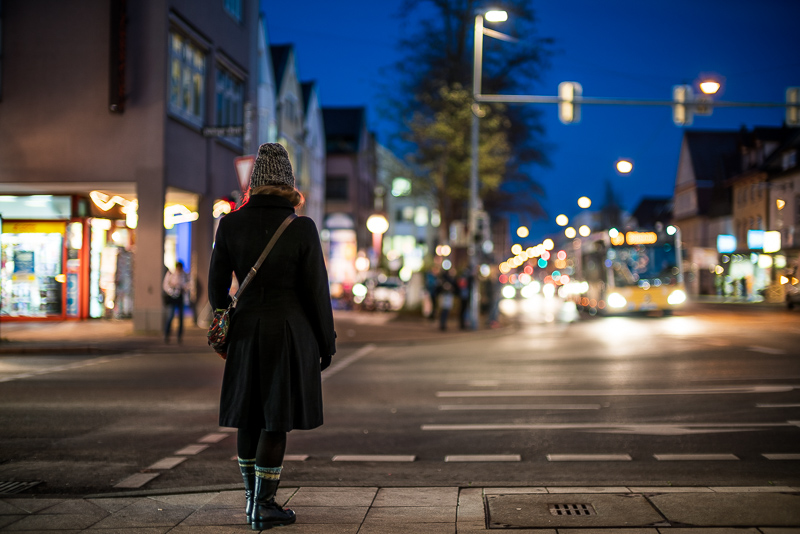
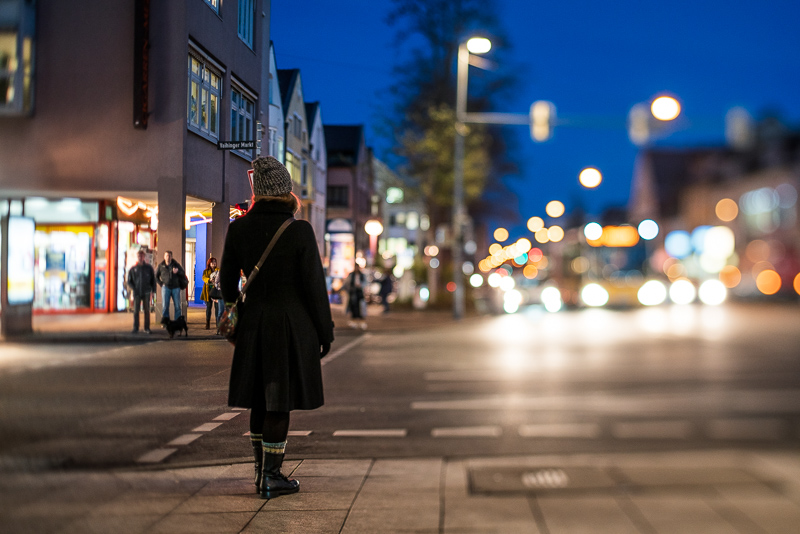

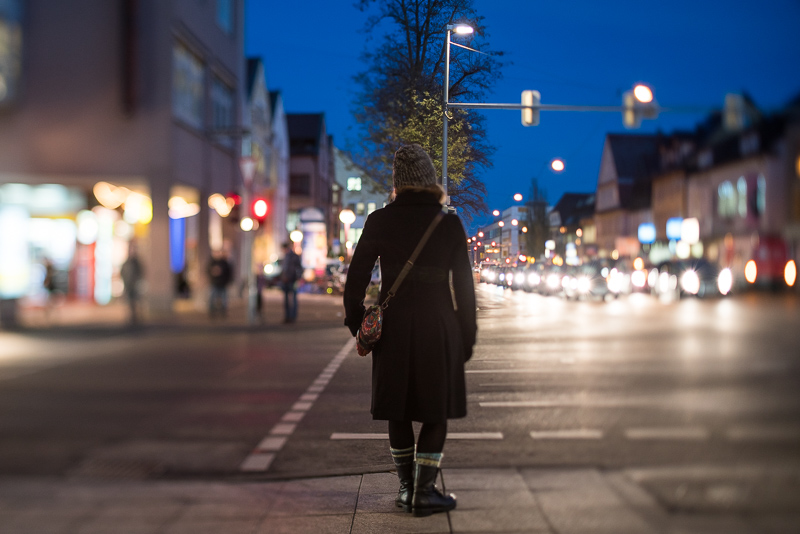
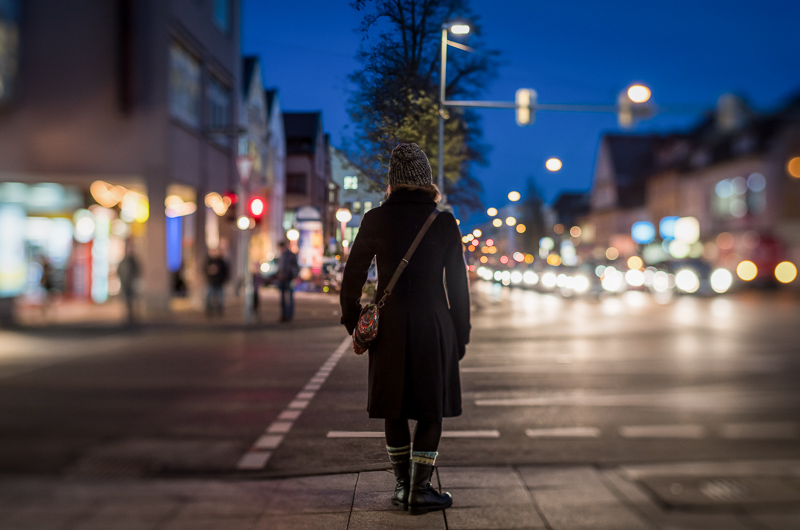
Great post! Love to read articles here and link them often as ‘reference reading’.
There’s one more thing and it’s one of the best features of mirrorless world when it comes to shifting lenses – universal shift (or tilt) adapters from brands like Kipon or Fotodiox. It will let you shift any decent fullframe DSLR lens on a mirrorless sensor – full shift with APS-C camera, some shift on full frame with some lenses.
I’ve been using Laowa 12mm with cheap Kipon adapter for years now when travelling on A6000 (making it 18mm with huge shift options). For now Fotodiox Nikon>Sony shift adapter for just $100 is my favorite, works even with Nikon G lenses (aperture ring), best for the money I’d say.
Laowa 12mm being the most universal option for this (including their own MSC adapter mentioned in the article) allows also for quite interesting full frame shift – the photo needs to be cropped later a bit, because of the built in corner ‘mini hood’, but it still makes about 14mm shifted photo (I even moved the hood corners physically out of the way with pliers – seems drastic, but it works nicely, the photo is almost clear afterwards – it’s not often one has use for 12mm shift lens, but it’s a possibility, and it makes a difference even with 6-7mm shift 🙂
Thanks!
For APS-C I think these adapters are very useful, for Fullframe it is a bit harder to find lenses that work well, that is why I did not cover them in this article.
The Olympus OM 24mm 2.8 works well on full-frame with a tilt adapter. It has a surprisingly large image circle considering how tiny it is. Since I need an adaptor to use this lens anyway, there is very little reason not to use a tilt adaptor. I assume the image quality can’t match a true tilt lens, but this is a setup that I’m much more likely to have with me when I come across a situation when tilt is helpful.
i find it hard to imagine what a Tiltshift Tele like the TS-E 135mm 4.0L will be useful for.
Can you give examples?
just figured out it will mostly be used for product photography.
Yes. And some people seem also like to use it for portraits.
T/S and me: use it mostly for landscapes when I’m looking for a wide depth of field. With extreme wide angles (16mm or lower) the depth of field produced at f8-f11 is more than enough for my use.
For lenses from 20mm and higher it’s certainly difficult to maintain enough depth of field if you want to preserve very good IQ without going above f8-f11 (due to diffraction like you mentioned).
So use for T/S purposes the “Mirex adapter” together with my “Zeiss f3.4/35-70mm (Contax mount)” lens.
Very nice combo. Great IQ, very sharp indeed, nice zoom range 35 to 70mm since I don’t have any AF-zoom in this range. Also easy to shift form horizontal view to vertical view.
Short-comes are coming from the Contax 35-70mm: rotating front lens, more flare than modern lenses and manual (but last topic is not a problem for me).
Not so easy to take it of the camera, the release button is rather difficult to access.
All info about the adapter here: http://mirex-adapter.de/preisliste.htm
So for 450€ you get an adapter that can be used with an all bunch of legacy lenses.
Shift panorama’s provide me max two field of views at 35mm. Take one without shift and two side images and are perfectly aligned. If you go more to the sides you get serious vignetting. But no vignetting at all for tilt images.
Still have the Canon TS-E 17mm but was almost always the lens who didn’t join me because of it’s weight. Was maybe one of the biggest GAS mistakes I ever took. Tried it out but never used it really.
Hope this helps as well.
Thanks for sharing your thoughts and experiences!
I agree, with the 17mm tilt is rarely necessary to increase DoF.
Edward – Awesome.. I have the C/Y 35-70 and was considering a shift adapter. Thanks. Do you have some sample photos?
Other than the 28mm, Schneider also makes a 35mm f4 shift lens, most commonly seen in Leica R mount.
Very interesting article!! I don’t have any experience with tilt/shift lenses myself but it is certainly something to experiment with in the future. I was not aware of the application of a tilt/shift lens for environmental portraiture, I really like the results 🙂
There’s also the Zeiss 35mm Distagon C/Y. Shift lens, which is optically quite excellent
I am planning to get zeiss pc-distagon 35mm for my Sony A7sii. Would it need a special adapter or can it be used with regular CY-NEX adapter?
It is a pretty rare lens that I have no experience with.
It might be a good idea to get a Novoflex adapter, they are usually as wide as possible.
Hallo Bastian and thank you for this useful overview.
In the Canon section you recommend the Sigma MC-11 for use with TS-E lenses and you seem to imply the MC-11 has a high mechanical precision for exact flange focal distance, while in your article “Guide to Adapters for Manual Lenses on the Sony a7 series” the Sigma MC-11 is not mentioned and you praise the precision of Rayqual adapters there.
Now, I have a Metabones IV and I notice an image quality loss (edge sharpness) with the TS-E 17mm and 24mm Mark II compared to their use on my Canon DSLR. Since here in Germany I cannot find Rayqual adapters I’d like to ask if you are so convinced of the mechanical precision of the MC-11 that you’d recommend me to spend another 240 Euro for it.
Thank you.
https://www.fredmiranda.com/forum/topic/1579076
Take a look here about the MB and Sigma adapter.
For the TS-E lenses you need an adapter with electronics to control the aperture. To my knowledge there is none like that from Rayqual.
And yes, the Metabones is often too short, I don’t recommend it for ultra wide angle lenses.
I simply shimmed my Metabones IV T (like many of my other adapters). If you’re used to doing it, it takes about 15 minutes (including testing).
BTW: the IV T is made especially for shift lenses, having a wider throat and extra anti-reflection flocking.
Thanks everyone.
I do have the Metabones IV T indeed, but it is nonetheless too short.
Shimming adapters means making them longer (typically by about 0,1 – 0,3 mm).
I’ve shimmed my MB IV T and many others.
A good shimming material is steel feeler gauges, which can be cut as needed and can be found very cheaply.
Why would I want to buy a more expensive adapter that I have to shim when I can get a better one for less money?
Price is a good argument, but the MB IV (T) has an Integrated Arca Swiss compatible foot, which is very useful with some lenses.
Also some extra mode options, which I currently don’t use.
In a not too distant past, there was a period where the MC-11 firmware upgrades caused serious AF problems (now apparently resolved), but that make me cautious about having it as my only Canon EF adapter.
This article is about Tilt/Shift lenses.
These are manual focus lenses.
The different modes are useless, those “serious AF problems” that apparently have been resolved are meaningless.
I see absolutely no reason to get any of the metabones adapters over the Sigma MC-11 for the Canon T/S lenses.
Furthermore I found the integrated Arca Swiss foot of the Metabones adapters to be pretty useless, as I am using an L-bracket they will block each other with most of the clamps available.
For some AF lenses the metabones adapter might yield better AF performance, but this has absolutely nothing to do with my recommendation to use the Sigma MC-11 for these T/S lenses.
Fine if one only needs it for TS lenses and has no AF ones, but it also makes no sense to get one adapter for TS lenses and another for AF lenses… 😉
If I may put in my view of smart adapters, I have both 24 and 17 TS-E and both the Sigma MC-11 and the Metabones V. Both needed extending/shimming. However there is one big advantage with the Metabones in “Advanced” mode as you can check the stopped down focus that you can’t with the MC-11. If you use tilt a lot to extend depth of field, this is very useful to check of what is and isn’t in focus.
For me one of the best and compact article about Tilt/Shift.
Bernhard
I like the looks of the waterfall pics where you used the shift to do a panorama and would like to try out the possibilities but don’t really need a TS lens.
What would you recommend for a minimal outlay to try this? one poster has mentioned the OM24mm and adapter, how would one find lenses which would cover most of full frame?
He was talking about using the OM24 for tilt, not for shift.
For shift you need a considerably bigger image circle.
All the wide medium format lenses that would work are very expensive.
Canon 24mm 3.5 Gen1 or Samyang 24mm 3.5 are the ones you should be looking for
(I would rather get the gen1 Canon, will loose less value over time and less likely be decentered).
Not extremely wide, but I’ve used the SMC Pentax 6×7 45mm on my Sony A7II with good results…
The OM to FE tilt adaptor I use also shifts the lens unintentially because of the way it pivots. This is a drawback to the setup because the shift may not be beneficial to the photo framing. It also means a large image circle is still an important factor when selecting a lens. The OM 24mm 2.8 has enough room around the edges to work for playing around with the technique, but it’s not going to give professional results. The advantage of this setup is extracting interesting bokeh from an otherwise slow and wide lens, and providing an inexpensive way of learning the shift technique.
Thanks for a well put together article Bastian.
I have one point though, you recommend starting by trying either Mk1 24 or 45mm TS-E. I have found that the 24mm really is not up to the 42mp sensor of my A7RII, if any tilt is used, it never gets sharp away from the centre. However on the A7/A7II and A7III it is just useable, (the same applies to the old FD TS 35/2.8).
I haven’t tried the 45mm, but have read that it is likely to be similar. (When I had the 21mp Canon 5DII, they were all fine).
The Mk1 90mm TS-E is fine on 42mp, one of my favourite rendering lenses.
Thanks a lot for this great article Bastian.
I am using the Laowa setup with 12mm zero-d and the magic shift converter and am very satisfied with the iq on my a7RII.
Prior I owned the Samyang and while it was acceptable on a 24Mp cam, like the a99 I had at the time, it really can’t keep up with demanding high res sensors like the a7RII.
Recently I also did a lot of research on shift options for Sony cameras (only using it for architectural photography though) because I often feel the resulting 17mm shift of Laowa is too wide… just started experimenting with adapting a Zeiss Distagon 18mm F3.5 on the MSC which gives me the equivalent of the 24mm look and it seems to work very well in terms of IQ and vignetting. Since modern Canon lenses don’t have a manual aperture rings and the laowa adapter doesn’t have contacts I would highly recommend getting the Laowa setup for Nikon mount for that matter. It is much easier (or in other words possible at all) to find newer lenses that work on high res sensors with a manual aperture ring for Nikon F mount and it gives you the possibility to adapt different focal lengths – might be a helpful tip for the Laowa recommendation?
Also: would you say the image quality of the newer canon ts lenses is so much better against the Laowa to justify the higher price (not only for the lens but also for the adapter you’ll inevitably need)?
The Canon TS-E 17mm 4.0 (currently working on the review) is quite a bit better than the 12mm 2.8 on the MSC.
Also a used one in combination with a Sigma MC-11 adapter is not that much more expensive than the 12mm 2.8 in combination with the MSC.
Still, for mostly stopped down shooting the 12mm 2.8 on MSC should be sufficient.
I have no experience with mounting other lenses on the MSC, as I had the Canon version and as you already noted not that many compatibly useful lenses are available.
The price of the newer Canon TS-Es is pretty steep, so for mostly stopped down shooting I am not sure the gain in image quality will be big enough to make up for the price difference.
Thanks for the article.
You noted that not much info was on the web for the Schneider TS lenses. Generally true but I found some reviews a couple of years ago when I was researching TS lenses for my architecture work.
The consensus was that while beautifully made, they fell short in IQ.
I finally decided on a Canon 17TS-E and also a 1.4xTC. Thus I had both a 17 and a 24 TS with excellent IQ.
I have been using the Canon 11-24 a lot and fixing minor perspective issues in LR. I find that even with very careful setup with a TS one still needs to attend to the verticals a bit in post. The 11-24 gives me a lot of flexibility and speed.
It occurred to me that the Magic Shift Converter may be a wonderful way to add even more versatility to the 11-24.
Great Review,
Did anybody knows if does exist and tilt/shift adapter for ts-e to sony a7 that also as electrical connection for f-stop?
because it will be nice to have doble shift option and be able to do shift panoramas with an extra shift for the horizon.
thanks for answers…
Thank you for all the information here. Do you have to do a lens cast calibration when you shift? If so, how do you do it for the 17mm lens?
Depends on the subjective. I use gradients in Lightroom for that.
Hi!
I’ve been looking At the Nikon Nikkor 35mm 2.8 pc
I can’t really find much information about this lens anywhere. I want to use mainly for more creative portraits. I know the newer lenses are better but not sure if the Nikkor would be as good as the canon 90mm or so.
Any help would be appreciate it
The Nikon can only shift, not tilt.
Shift is not really useful for creative portraits.
The lens you want is the Canon TS-E 45mm 2.8.
I’ve found interesting article about using Fotodiox Tilt/Shift adapter, which has some practical informations about using T/S adapters.
https://www.bhphotovideo.com/explora/photography/hands-on-review/in-the-field-fotodiox-pro-tlt-rokr-tilt-shift-adapters
Do you think there is a big difference in fidelity between the Laowa 17mm + Tilt shift vs Adapting the 17mm Canon TS-E on a Sony full frame?
Laowa does not tilt, only shift and shifts 2mm less then the Canon and I often use those 2mm.
But apart from that the differences aren’t huge.
Hello, a very interesting article. I’m looking for a device which will let me use an ultrawide angle without getting converging lines. It’s incredible, the Magic Shift Converter does not work with FE lenses! Does not work with Nikon/Canon mirrorless lenses.
Does not work with the Laowa 9mm (because it’s not built for reflex but for mirrorless only). Practically does not work with any interesting lens I’d like to use! Now I’m passing to Sony Alpha system and bothered to use the 17mm focal (I used the Nikkor 17-35 until I sold the D750) I was caressing the idea of a nevermore-compromises-weaponry… coming back to a 17mm focal (Laowa 12 zeroD is cropped to an equivalent 17mm field of view when on a Magic Shift) is a frustration. I was thinking about putting the Sigma 15mm 2,8 diagonal fisheye on the Magic Shift (I must check if compatible), it should drop from 180° to about 154° (a bit too much since the Laowa 9mm is 135°…) keeping an f/4 of luminosity. What do you think about it, master? In your opinion does it make any sense? Thanks in advance.
Maybe you try explaining what you want to achieve?
I see absolutely no use for a fisheye lens on a Shift converter.
I’d like to get an ultrawide lens wider than the 17mm focal without the converging lines. I sometimes feel the need of a larger field… with these lenses the converging lines are sometimes ugly to see so… Something like the Laowa 12mm or 9mm would be perfect and a shift adaptor would do the job. But I need a focal shorter than the 12mm if I want to get both but there isn’t… there is the Laowa 9mm but it’s not compatible. So I thought a fisheye could do the job, but I have a lot of doubts. As you highlight it’s an extreme layout.
If you had a 9mm shift lens the perspective distortion would be so bad, I question its usefulness.
If you don’t like converging lines I have no idea where you even get the idea of using a fisheye lens from.
a) get the Laowa 9mm 5.6 and correct converging verticals in post
b) get the Laowa 15mm 4.5 shift (not wider than a crop out of the 9mm but more pixels, if you need that, see my review)
Hello, I did as you suggested me, after reading your reviews I purchased a Sony Alpha and a Laowa 9mm. I’ll try to fix the converging lines in postproduction. Thank you very much for your help, master!
Just be careful with that lens to only tilt the camera very little 🙂
Thank for a great article. I waiting for a review of AstrHori 18mm f8 Shift. I really want to try this kind of lens with this cheap model.
Review is coming soon.
Great news! Thanks
I decided to experiment with shimming my Metabones IV T to achieve better result with my Canon TS-E 24mm II, because I already had a Metabones. I found the result pretty interesting. Before shimming, the adapter measures 25.9mm, 0.1mm short of the expected difference between EF and FE. I shimmed it with 0.1mm of copper foil. After shimming, the lens reaches infinity focus on a7RIII at the same focus ring position as my old Canon 500D (pointing at the vertical line of the “L” shape before infinity symbol). However, comparing the tests shots before and after shimming, I don’t notice much difference in corner sharpness. Then I added two more layers of 0.1mm copper foil, making the adapter longer than 26mm. Now the infinity position on a7RIII is past the infinity position on 500D. However, I notice a pretty significant improvement in corner sharpness.
I just found one issue. With 3mm shim, while the TS-E 24 II appears to work pretty well, some other EF mount lenses cannot focus to infinity.
Maybe it is better to shim the lenses individually (if possible)
Some updates and corrections. It turns out my TS-E 24 II is decentered (seems like a common issue for TS-E given the number of moving parts) and the corner I used for shifted comparison is the more blurry one. When using 3mm shim, the worse corner gets sharper, but the opposite corner becomes bad. After some more testing I’d say 1mm or 2mm (2mm somewhat compensates the worse corner without making other corners too bad) works better than 3mm.
Yeah it does seem to be a common issue. I added a small piece of duct tape on my Ts-e 17 to mark the border with the best image quality when shifted…
Another thing that I didn’t take into consideration in my initial testing was the decentered corner isn’t always the same corner on the sensor (like I am used to with most lenses I have used). It can rotate when the tilt/shift mechanism is rotated as the whole lens group is rotated.
Thanks for sharing the duct tape trick. I will also do this for my TS-E.
The PC-Nikkor 19mm 4.0E ED N is better than any of the Canon TS-E lenses optically.
Pretty wild claim.
Have you used all the recent Canon TS-E lenses including the 50mm 2.8 and 135mm 4.0?
Not a wild claim. Have you used the PC-Nikkor 19mm 4.0E ED N lens? Just seems like you might have a bias due to the fact you shoot E mount.
I take completely avoiding my question as a no then.
The combined reading of this article and your other recent tilt shift lens articles led me to get the fotodiox rokkor tilt shift adapter for Hasselblad lenses since I already had the lenses and $200 is not much to experiment with.
The adapter is sort of funky, The tilt is in only one direction and you have to rotate the base to tilt in other areas. The tilt has a tiny screw to set the tilt and it does not stick out far from the adapter and I cannot turn it unless I set the shift to the opposite side of the screw, then set the shift back after. The set screw won’t hold the weight of the 50 or 150 either so shots with lens tilting down get interesting.
I’d have to say I like the possibilities which open up creatively using tilt and stitching works great but the adapter is definitely lacking and the hasselblad lenses aren’t as good as I would have thought when put in front of a RIV which with no tilt or shift shows their weakness in pure detail. The 50,80,150 all have more than wide enough image circle and I love their rendering and colors and they can make a great image so I am happy enough with the experiment.
Glad the experiment worked out for you!
Thank you for your effort to create this great article, very helpful!
Hello! I’m looking mostly at Tilt effect to play with 🙂 taking this in account can you recommend any of cheaper variants? I’m also looking for Sony FE mount and want to squeeze max pixel count possible. But the same time I do not mind using slow apertures and tripod
thank you!
Hey, it is a bit hard for me to recommend either the TTArtisan 50mm 1.4 Tilt or the AstrHori 50mm 1.4 Tilt. They are around $200 but both have one noticeable outstanding flaw.
It might still be worth to check the reviews of both, maybe one could still work for you depending on what you are looking for.
Next best option is the Canon TS-E 45mm 2.8, but it is definitely more expensive and you need a Canon EF adapter if you don’t already have it.
Great article again!
Been lusting for a shift lens for my full frame Sony body.
Since I already own a 12mm from Laowa, I was excited to be able to pair it with the Magic shift. To realized that it does not work directly with the 12mm on a Sony body.
Is it only me who feels a bit frustrated about the issue?
Based on your article, I am thinking about the 9mm f/5.6 FF RL.
Not perfect but more affordable (with less pixels to work with).
Any other advice you would be able to offer (apart from the huge cost of buying Canon t/s lens with adaptor?
Thanks in advance!